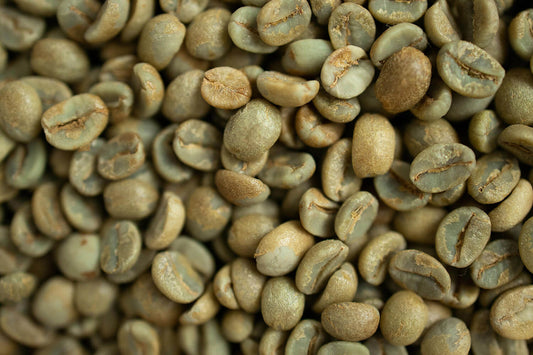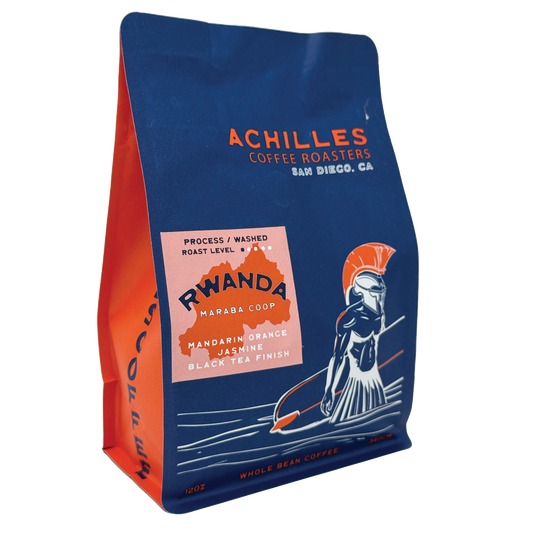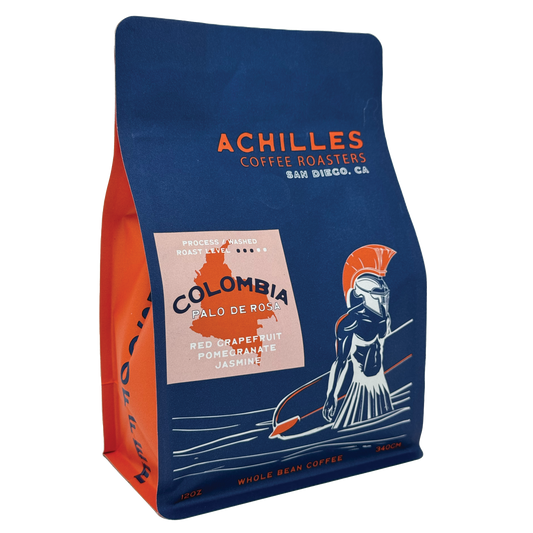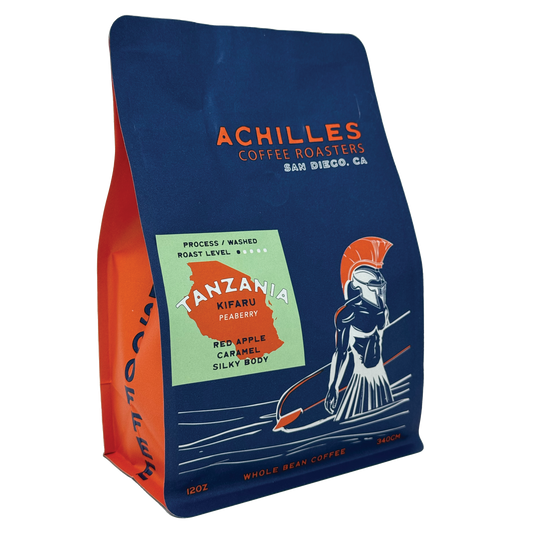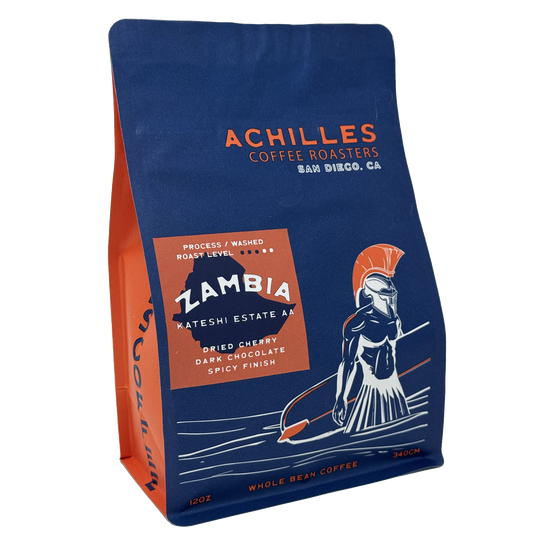
Single-Origin vs. Blend: Which Coffee Should You Be Drinking?
Coffee is much more than just a morning pick-me-up—it’s a complex and diverse beverage influenced by a multitude of factors that come together to create the unique cup you enjoy. From the rich soil and climate conditions where the coffee plants grow, to the varietal of the bean, the way it’s processed, roasted, and finally brewed, every step along the way contributes to the final flavor and experience. One of the most fundamental decisions that coffee lovers encounter is whether to opt for a single-origin coffee or a blend. Each choice offers its own set of unique characteristics, advantages, and flavor profiles, making it important to understand the distinctions before deciding which suits your preferences best.
Single-origin coffees offer a focused, transparent glimpse into a particular region, farm, or even micro-lot, highlighting the specific terroir and cultivation practices that shape the bean’s flavor. In contrast, blends bring together beans from multiple origins or varietals, expertly combined to achieve balance, complexity, or consistency that a single source may not provide on its own.
This guide is designed to help you navigate these options by exploring what sets single-origin and blended coffees apart. We’ll delve into how their flavor profiles differ, what makes them unique in terms of complexity and consistency, and provide insights to help you determine which style aligns better with your palate, brewing method, and lifestyle. Whether you’re a casual coffee drinker or a budding enthusiast eager to deepen your understanding, this overview will equip you with the knowledge to make more confident and enjoyable coffee choices—without any pressure or sales pitch
What is Single-Origin Coffee?
Single-origin coffee refers to beans that come exclusively from one clearly defined location—this could be a specific country, a particular region within that country, a single farm, or even a carefully selected lot within a single farm. This precise sourcing is what makes single-origin coffees special, as they provide a direct window into the unique environmental and agricultural conditions of that area. Factors like the local climate, soil composition, altitude, and the farming and harvesting methods all play a crucial role in shaping the flavor profile of the beans.
For example, a coffee grown at high altitude in the Ethiopian highlands will often have bright acidity and floral notes, while one from the volcanic soils of Central America might present rich chocolate undertones and a fuller body. Single-origin coffees celebrate these distinct terroirs, allowing coffee drinkers to experience the rich diversity that the world’s coffee-growing regions have to offer.
These coffees are prized among enthusiasts and professionals alike for their transparency and traceability—when you sip a single-origin coffee, you’re tasting the story of that specific place and its people. You can often find detailed information about the farm, the varietal of coffee plants used, and the processing methods applied (such as washed, natural, or honey process), each of which further influences the nuances in flavor. This level of detail and specificity invites drinkers to explore and appreciate the subtle complexities and unique characteristics that make each single-origin coffee a truly distinctive experience.
What is a Coffee Blend?
A coffee blend is a thoughtfully composed mixture of coffee beans sourced from two or more distinct origins, roast levels, or varietals. Unlike single-origin coffees, which spotlight the unique qualities of a particular place, blends are crafted to bring together complementary flavor profiles and characteristics from different beans. The goal of blending is to create a coffee that offers a harmonious balance, greater complexity, or a more consistent flavor experience across batches.
Blenders approach this art with intention, combining beans that may vary in acidity, body, sweetness, and aroma to build a final product that is greater than the sum of its parts. For example, a bright, acidic coffee from one region might be blended with a fuller-bodied, chocolaty bean from another to create a cup that is both lively and rich. This approach allows roasters to highlight specific flavor notes, tailor coffees to particular brewing methods, or simply craft a profile that appeals to a wide range of tastes.
Blends are often designed with practical considerations in mind. Espresso blends, for instance, are formulated to stand up well when combined with milk, ensuring that the resulting latte or cappuccino maintains a robust, balanced flavor. Similarly, house blends are created to provide a dependable, consistent taste to customers throughout the year, even as the availability and characteristics of single-origin beans fluctuate seasonally. This consistency is especially valuable for cafés and roasters who want to offer a signature flavor that their customers can rely on.
Beyond balancing flavors, blends can also help mitigate challenges posed by the natural variability of coffee crops. By combining beans from different regions or harvests, blenders can smooth out fluctuations in acidity, body, and sweetness, ensuring that each batch delivers a satisfying and familiar experience. In this way, blending is both an art and a science, requiring deep knowledge of coffee origins, roasting profiles, and sensory evaluation to craft coffees that are both enjoyable and reliable.
Flavor and Complexity: Single-Origin vs. Blend
Single-Origin Coffees:
Single-origin coffees tend to highlight bright, vibrant, and distinct flavors that are direct expressions of their terroir—the unique combination of environmental factors such as soil composition, altitude, climate, and microclimate where the coffee was cultivated. These factors play a crucial role in shaping the bean’s flavor, resulting in distinctive tasting notes that can vary widely depending on the region. For example, you might encounter lively citrus bursts from Ethiopian coffees, juicy berry undertones from Kenyan beans, delicate floral aromas from Colombian farms, rich chocolate hints from Central American estates, or exotic tropical fruit flavors from coffees grown in tropical island regions.
Because single-origin coffees are designed to showcase the characteristics of a specific place and often a specific farm or lot, their flavor profiles are typically more adventurous, complex, and layered. The clarity and transparency of these coffees allow drinkers to detect individual tasting notes with precision, making them particularly well-suited for brewing methods that emphasize subtlety and detail, such as pour-over, Chemex, or siphon brewing. These methods highlight the nuanced acidity, aroma, and mouthfeel that single-origin coffees offer, turning each cup into a tasting experience akin to sampling fine wine or craft beer.
However, this complexity and specificity can also mean that single-origin coffees sometimes present flavors that are less balanced or harmonious compared to blends. For instance, a coffee from a high-altitude farm might have a pronounced bright acidity or a bold, fruity character that some drinkers find unfamiliar or challenging if they are accustomed to the smoother, more consistent flavors typically found in blends. Single-origin coffees can occasionally have flavor quirks or sharper notes that require an adventurous palate or a willingness to explore beyond traditional coffee flavor expectations.
Ultimately, single-origin coffees invite exploration and discovery. They offer coffee lovers a window into the diverse landscapes and farming traditions of coffee-growing regions worldwide, rewarding those who appreciate the complexity and variety that come with terroir-driven coffees. This makes single-origin choices ideal for those who want to deepen their coffee knowledge and enjoy unique, expressive cups that tell the story of where they came from.
Blended Coffees:
Blends are thoughtfully crafted by coffee roasters who combine beans from multiple origins, roast levels, or varietals with the goal of balancing the unique strengths and offsetting any weaknesses of each component. By blending different beans, roasters can achieve a harmonious and well-rounded flavor profile that offers a more approachable and consistent coffee experience. This blending process allows the creation of a cup that tempers the extremes you might find in single-origin coffees—whether that’s the sharp brightness of a high-acid bean or the heavy, intense body of a darker roast.
For example, a well-designed blend might combine the bright, citrusy acidity and floral notes from an Ethiopian coffee with the smooth, rich body and deep chocolate undertones of a Brazilian bean. The result is a cup that is lively and complex, yet balanced and smooth, appealing to a wide range of palates. This kind of synergy is difficult to achieve with a single-origin coffee, and blending gives roasters the creative freedom to tailor coffees to specific taste preferences or brewing styles.
Beyond flavor complexity, blends play a critical role in ensuring consistency. Since coffee crops vary seasonally and annually due to factors like weather, rainfall, and harvest timing, the flavor characteristics of beans from any one origin can fluctuate. By blending multiple lots or origins, roasters can smooth out these seasonal variations and produce a flavor profile that remains stable and familiar from one batch to the next. This consistency is especially important for cafés, roasters, and brands that rely on customer loyalty—customers come to expect a certain taste from their favorite coffee, and blends help guarantee that expectation is met despite changes in crop availability.
Moreover, blends are often tailored for specific purposes—such as espresso blends designed to stand up well to milk or house blends created to appeal to a broad customer base. This versatility makes blends a practical choice for everyday coffee drinkers and professional baristas alike, offering reliability without sacrificing complexity.
In summary, blends provide a balanced, consistent, and versatile coffee experience. They reflect the artistry and skill of roasters who work to craft coffees that please a wide audience, maintain quality over time, and highlight the best of what multiple origins can offer when combined thoughtfully.
Consistency: Which Offers More Predictability?
If consistency is your top priority—whether you're brewing at home and want a reliably familiar cup each morning, or running a café or business where customers expect the same taste every time—blends generally offer a significant advantage. Because blends combine beans from multiple origins, farms, or lots, any subtle changes or fluctuations in one component can be balanced out by the others. This blending process helps smooth out seasonal variations, differences in weather, soil conditions, and harvest quality that naturally affect coffee crops. As a result, the overall flavor profile of a blend tends to remain stable and predictable over time, allowing you to enjoy a consistent taste experience across batches, months, or even years.
This reliability is crucial for businesses aiming to build customer loyalty, as patrons often seek the comfort of a familiar flavor they can depend on regardless of when they visit. It also benefits home brewers who appreciate a dependable cup that doesn’t surprise them with drastic changes from one bag to the next.
On the other hand, single-origin coffees tend to embrace and celebrate variability. Because single-origin beans come from a specific location, farm, or even a micro-lot within a farm, they directly reflect the unique conditions of each growing season. Factors such as rainfall, temperature, altitude, and soil composition differ year to year, and these subtle environmental shifts profoundly impact the coffee’s taste profile. As a result, the same single-origin coffee can present notable differences between harvests or lots, making each batch a unique tasting experience.
This variability is part of what makes single-origin coffees so special and exciting for many coffee lovers—they offer a dynamic journey through terroir and seasonality, much like fine wines. However, it also means that the cup you adore this season may not taste quite the same next year or even with the next micro-lot from that farm. For those who prioritize exploring coffee’s diversity and complexity, this unpredictability is a feature, not a bug, but it can be less ideal if you want a reliable, repeatable flavor every time you brew.
Ultimately, the choice between consistency and seasonality is a key consideration when deciding between blends and single-origin coffees. Both have their unique appeal and value depending on what you’re seeking in your coffee experience.
Complexity and Depth: Which Coffee Has More Layers?
-
Both single-origin coffees and blends can offer impressive complexity, but the nature and source of that complexity differ significantly between the two, providing distinct tasting experiences.
-
Single-origin coffees derive their complexity primarily from the unique terroir—the combination of geography, climate, altitude, soil, and farming practices—and specific processing methods used for that particular crop. This means that each cup of single-origin coffee is a direct reflection of its place of origin, almost like a snapshot of its environment and cultivation. When you sip a high-altitude Ethiopian coffee, for example, you might encounter bright, lively acidity with layered floral and citrus notes that evoke its mountainous growing region. On the other hand, a coffee from Indonesia might showcase earthy, herbal, and rich tones, revealing the island’s volcanic soil and traditional wet-hulling processing style. The complexity in single-origin coffees often lies in the discovery of distinct, sometimes unexpected, flavor notes that can unfold in layers as you taste. This allows drinkers to appreciate the nuance and individuality of different coffee-producing regions, making single-origin coffees especially appealing to those who enjoy exploring the diverse flavor spectrum of coffee.
-
Blends, by contrast, achieve their complexity through the skillful art of combining multiple beans, each contributing its strengths to create a harmonious and well-rounded cup. Rather than highlighting one specific terroir, blends emphasize balance and depth by marrying beans that complement and enhance one another. The interplay between the various components—whether it’s the bright acidity from one origin combined with the smooth body and chocolate notes of another—can result in a multi-dimensional experience that evolves with every sip. You might notice how the initial brightness mellows into richer, sweeter undertones as the coffee cools, or how the bitterness is softened by creamy, nutty flavors from other beans in the blend. This layered complexity is crafted intentionally to offer a coffee that is versatile and satisfying, appealing to those who seek a nuanced cup with balanced acidity, body, sweetness, and bitterness all working in concert.
-
In summary, single-origin coffees offer complexity rooted in the natural and environmental uniqueness of a specific place, encouraging exploration and discovery. Blends, meanwhile, present complexity as a deliberate composition of complementary flavors designed for balance and harmony. Both approaches provide rich, engaging flavor experiences but cater to different preferences and occasions in the world of coffee tasting.
Brewing Considerations
Single-origin coffees often shine brightest when brewed using methods that emphasize clarity and preserve their delicate flavor nuances. Techniques like pour-over, Chemex, and siphon are particularly well-suited for single-origin beans because they allow the coffee’s bright acidity, intricate floral or fruity notes, and subtle aromatic qualities to fully develop and be appreciated in the cup. These brewing methods typically involve slower extraction and precise control over variables like water temperature and flow rate, which help highlight the unique characteristics imparted by the coffee’s specific origin. The result is a clean, crisp cup where each layer of flavor can be distinctly detected, making it an ideal choice for those who enjoy savoring the complexity and terroir-driven qualities of single-origin coffees.
On the other hand, blends tend to be more versatile across a wide range of brewing methods, performing consistently well in espresso machines, drip brewers, and French presses. Their balanced flavor profiles and fuller bodies make them especially suited for espresso, where the intense extraction process and combination with milk demand coffees that are robust and consistent. Blends are often crafted with this versatility in mind, ensuring they deliver a harmonious flavor that can stand up to the rich creaminess of milk in lattes and cappuccinos without losing their core character. In drip brewing or French press, blends also offer a satisfying balance between acidity, sweetness, and body, creating smooth, approachable cups that appeal to a broad audience.
In essence, while single-origin coffees invite you to explore and experience the distinctive qualities of a particular place through gentle, precise brewing methods, blends provide a reliable, adaptable coffee experience that excels across multiple preparation styles, making them a popular and practical choice for everyday enjoyment and espresso-based drinks alike.
How to Choose: Factors to Consider
Your Flavor Preferences: When deciding between single-origin and blend coffees, it’s important to think about the flavors you most enjoy. If you love exploring bright, distinctive, and sometimes unconventional flavor profiles, single-origin coffees provide a fantastic opportunity to experience unique tastes that reflect the specific region, farm, or even micro-lot where the beans were grown. These coffees often highlight unusual fruity, floral, or acidic notes that can be exciting and rewarding for adventurous palates. On the other hand, if you prefer a more reliable, smooth, and well-rounded cup, blends might be a better fit. Blends are crafted to offer harmony and balance, smoothing out extremes and delivering a flavor profile that’s consistently pleasant and approachable.
Consistency vs. Variety: Consider how much consistency matters to you in your daily coffee routine. If you want a steady, familiar flavor every day with little variation, blends are designed precisely to provide that dependable experience. By combining beans from multiple origins, roasters can maintain a consistent taste despite seasonal fluctuations in coffee crops. However, if you enjoy seasonal discovery and the excitement of trying something new and different with each harvest, single-origin coffees deliver that variety. Each season and micro-lot can reveal new flavor nuances and unique stories, turning your coffee ritual into an ongoing exploration.
Brewing Method: Your preferred brewing style should also influence your choice. Single-origin coffees often perform best with brewing methods that emphasize clarity and subtlety, such as pour-over or Chemex, allowing their complex flavor notes to shine. Blends, with their balanced profiles and fuller bodies, are typically more adaptable and excel in espresso, drip, or French press brewing. Matching your coffee type to your brewing method ensures you get the best flavor experience possible.
Budget: Finally, your budget plays a role in choosing between single-origin and blends. Single-origin coffees, especially those sourced from specialty farms or limited micro-lots, can sometimes command higher prices due to their rarity and the care involved in sourcing. Blends, however, often offer more affordable options while still maintaining quality, making them a great choice for those looking to enjoy excellent coffee without breaking the bank. By weighing these factors, you can make an informed decision that aligns with your tastes, lifestyle, and budget.
Final Thoughts
There’s no absolute “better” when it comes to choosing between single-origin and blended coffees—each offers a distinct experience tailored to different tastes, moods, and occasions. Single-origin coffees often attract those who appreciate the storytelling behind their cup—the unique journey from a specific farm, region, or micro-lot, along with the distinct flavors and aromas that reflect that place’s terroir. These coffees celebrate diversity and nuance, inviting drinkers to explore the intricate characteristics shaped by geography, climate, and farming practices.
On the other hand, blends provide a reliable and balanced flavor profile that works well for everyday enjoyment. They’re designed to deliver consistency, smoothing out seasonal variations and offering a harmonious cup that appeals to a broad range of palates. Many coffee enthusiasts find themselves turning to blends when they want a comforting, familiar taste or when brewing methods call for a more robust, versatile coffee—such as espresso or French press.
As you continue to develop your coffee palate, don’t hesitate to explore both single-origin beans from diverse regions and thoughtfully crafted blends. Sampling these side-by-side can be a rewarding way to deepen your understanding of coffee’s vast flavor spectrum. It allows you to recognize how factors like origin, processing, and blending techniques impact taste, body, and aroma, ultimately helping you refine your preferences.
Remember, coffee appreciation is highly personal. The “best” coffee is not defined by origin or blend but by what delights your senses and fits your lifestyle. Whether you find joy in the bright, complex notes of an Ethiopian single-origin or the smooth, balanced flavors of a carefully composed house blend, the perfect cup is the one that makes you look forward to every sip. Embrace the journey, keep tasting, and enjoy the rich world of coffee in all its forms.



